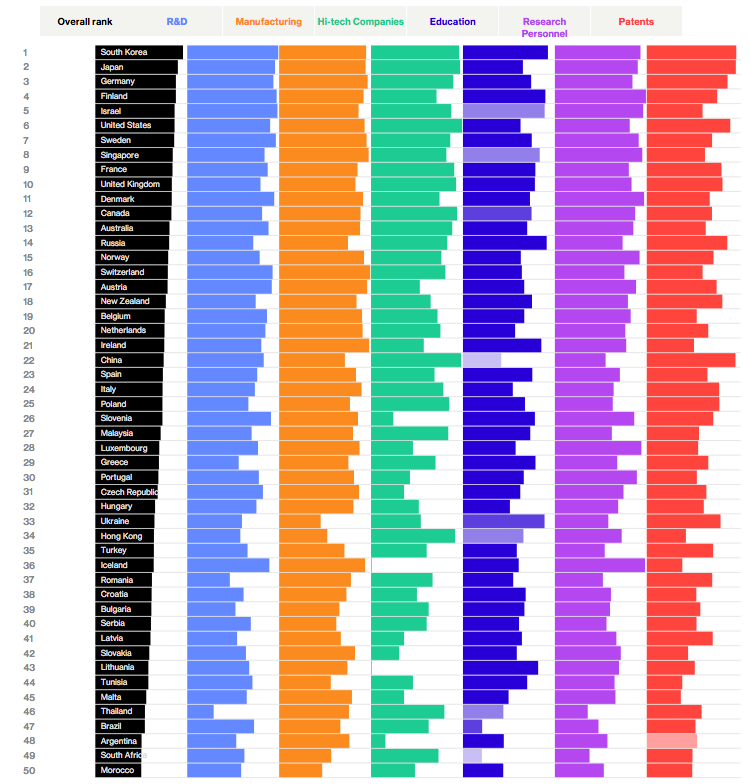click for interactive inforgraphic

Source: Bloomberg

January 26, 2015 3:30pm by Barry Ritholtz
This content, which contains security-related opinions and/or information, is provided for informational purposes only and should not be relied upon in any manner as professional advice, or an endorsement of any practices, products or services. There can be no guarantees or assurances that the views expressed here will be applicable for any particular facts or circumstances, and should not be relied upon in any manner. You should consult your own advisers as to legal, business, tax, and other related matters concerning any investment. The commentary in this “post” (including any related blog, podcasts, videos, and social media) reflects the personal opinions, viewpoints, and analyses of the Ritholtz Wealth Management employees providing such comments, and should not be regarded the views of Ritholtz Wealth Management LLC. or its respective affiliates or as a description of advisory services provided by Ritholtz Wealth Management or performance returns of any Ritholtz Wealth Management Investments client. References to any securities or digital assets, or performance data, are for illustrative purposes only and do not constitute an investment recommendation or offer to provide investment advisory services. Charts and graphs provided within are for informational purposes solely and should not be relied upon when making any investment decision. Past performance is not indicative of future results. The content speaks only as of the date indicated. Any projections, estimates, forecasts, targets, prospects, and/or opinions expressed in these materials are subject to change without notice and may differ or be contrary to opinions expressed by others. The Compound Media, Inc., an affiliate of Ritholtz Wealth Management, receives payment from various entities for advertisements in affiliated podcasts, blogs and emails. Inclusion of such advertisements does not constitute or imply endorsement, sponsorship or recommendation thereof, or any affiliation therewith, by the Content Creator or by Ritholtz Wealth Management or any of its employees. Investments in securities involve the risk of loss. For additional advertisement disclaimers see here: https://www.ritholtzwealth.com/advertising-disclaimers Please see disclosures here: https://ritholtzwealth.com/blog-disclosures/
Cool graphic. Unlike some of the other highlighted countries, investing in post-secondary education and STEM graduates in the U.S. would essentially enable the U.S. to be “by far” the most innovative nation in the world. All it would take is a few relatively simple policy changes to encourage these degrees, which would have a dramatic effect on our economy – for the better. Even so, it’s still pretty amazing that a country as diverse and as large as the U.S. (as compared to the other countries ranked higher than us) does so well overall.
We could encourage Americans to go into stem, but we could also make it easier for talented foreigners to stay in the US. Our tech business has strong foundations with immigrants, and with the world today, we should do more to expand that. How much has the H1B system changed in 20 years?
A few simple changes, like hiring qualified Americans in preference to H1-B indentured servants or outsourcing the whole engineering project to China.
What is missing from the list is also an interesting thing to look at – India. 1.2 billion people and not in the Top 50 for innovation. That is something.
I couldn’t tell for all the measures, but there is a strong per-capita lean to the measures. Per the CIA, India’s literacy rate is only 62.8%, and just above 50% for women. Compare that to 95% for China. For all its problems, China has done a much better job bringing up all its people than India has.
South Korea is the real story here, and where I’d point is the success of Hyundai & Kia. Their reputations have not improved because of styling, but because of vastly improved reliability.
Two things. First, the overall ranking depends upon how the various factors are weighted, so the validity of the weighting method needs in-depth discussion, which I couldn’t find in the article.
Second, Russia being at number 14 surprised me. From what I’ve read, their economy is mostly based on natural resources, and has always lagged behind in most areas of technology for various historical reasons. So I’d expect their ranking to be lower. On the other hand, I expected Hong Kong to be higher than 34.
Lagging technology? They were the first to launch a satellite and they possess the only working manned launch systems still in existence.
R&D is as percent (could use currency deflated measure?) GDP. For US if you took away “security”: pentagon, DHS, DoE (nuclear arms) and DoT (Coast Guard, etc); US R&D percent as GDP would look more like Greece.
A lot of “security” related R&D is for scrap and rework in the “detailed design and integration”, a lot of other “security” R&D is in things like star wars, stealth, snooping, etc. which have huge technical problems beyond solution and should have stayed in the lab.
Similar for manufacturing “value added.”